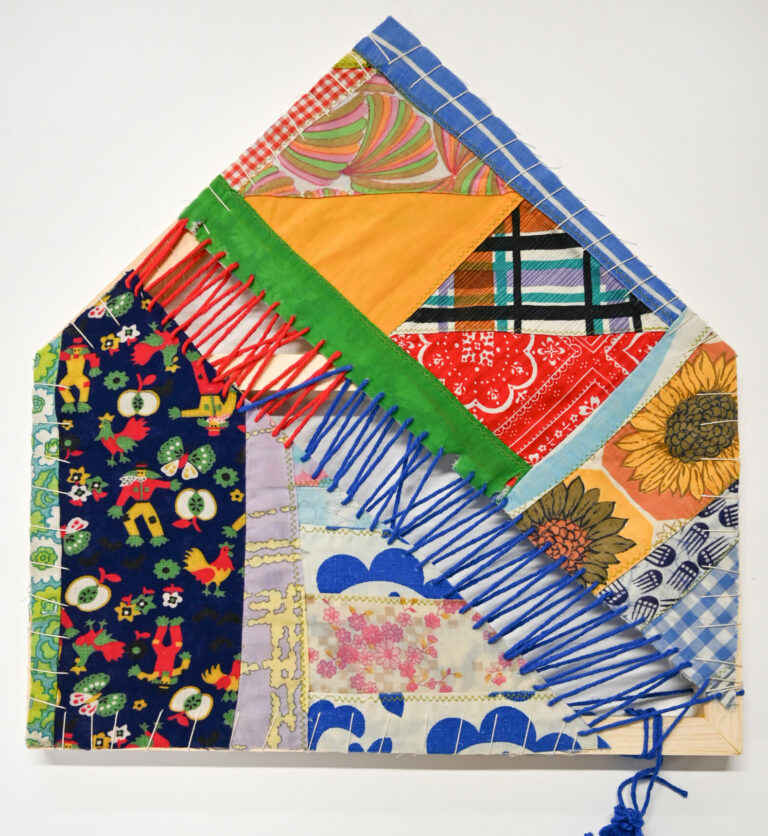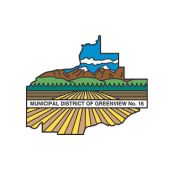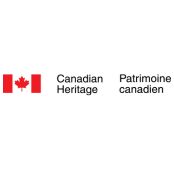We work with what we’ve been given
We work with what we’ve been given

The phrase “we work with what we’ve been given” means that individuals or a group of people adapt and work with the resources and opportunities they have, rather than waiting for more or better resources. It highlights resilience and the ability to make the most of available tools, skills, and situations.1
Artists are influenced by many things when creating work, their influences can come from family heritage, life experiences good or bad, an object on the side of the road, a walk in the woods. The list is endless. In this exhibition you will get a glimpse into the inner workings of artistic creation. For Jordi Issac, themes of self-identity, family history, trauma and grief are at the core of their practice. Their idea is based on the dichotomy of the severance of culture and community and the preservation of the deep-running ties that bind them to their heritage. Heide Enzmann works draw inspiration from the beauty of nature and its adaptability and resilience in changing environments.
The viewer is invited to step back and imagine the influences that have created the piece they are viewing. We realize that everything that happens in life affects us all in different ways, and the ability to adapt to these experiences makes us who we are.
1 Recalling Past Wisdom: Proverbs from Around the World. (n.d.)
Curated by Jamie-Lee Cormier, Curator/Manager of Travelling Exhibitions Northwest
Feature image: Jordie Isaac, Askew, 2025, Fabric, string and pine wood, Collection of the Artist.
Featured Artist
Connie Nooy
Paintings by Nana
Connie Nooy, born in the Peace Country and residing in Grande Prairie, AB with her husband of 46 years, is an abstract/objective artist creating with both watercolors and acrylics.
Self-taught since 2017, Connie is cultivating her style through experimentation. She does this by mixing and blending her own colors and using a variety of materials and tools to create her pieces. As “The Painting Nana,” Connie is blessed to share her love of art with her grandchildren.
Connie enjoys pursuing opportunities for growth. As a local artist to Grande Prairie, she desires to extend her show attendance throughout Alberta and beyond, always looking to exhibit and share her work and passion.
Heide Enzmann
I engaged full time in my art practice in 2019 when I could no longer teach due to kidney failure. This was a difficult time, as my purpose and identity had been so integrally connected to my job. I decided to take advantage of my disability to fulfill a dream of mine; to make art. Instead of I spent my days playing and exploring a variety of artistic mediums and techniques. Making art became a daily practice and a tremendously positive presence in my life.
After my transplant in 2019, I was unable to return to teaching as I was diagnosed with severe Fibromyalgia. Fortunately the gift of making art had woven its way into my soul, and was now an integral part of my healing journey and personal growth. When I’m creating I am able to transcend my daily pain and connect to joy and a source of energy that is larger than myself.
My artworks are bright, fun, bold, and full of color. I paint without a plan. I improvise and compose simultaneously, exploring themes around the cooperation of nature as magical flora appear on the page. My creations exist on another planet that celebrates and values peace, harmony, and diversity.
I draw inspiration from the beauty and of nature and its adaptability and resilience in changing environments. Flowers and plants have the ability to grow and adjust in harmony with their surroundings, and each blooms and develops on its own schedule. By representing flora I am reminding others and myself that each of us has the ability to evolve, transform, and bloom in the face of adversity.
Jordie Isaac
My name is Jordie Isaac, I am a visual artist based in Grande Prairie, Alberta. I have roots in the local Mennonite community and my most recent artistic explorations are based on the complicated emotional process of leaving my close-knit community as an adult. Themes of self-identity, family history, trauma and grief are at the core of my practice. My idea is based on the dichotomy of the severance of culture and community and the preservation of the deep-running ties that bind me to my heritage. I am searching for answers of how one deals with the separation and loss of cultural ties while longing for connection to my past. In these pieces I use culturally traditional materials and found objects, collaging fabric and string to signify self-identity and growth. I express these ideas through abstract expressionism in the inspiration of Cy Twombly, collage of textiles inspired by Jill Nuckles, and creation of quilts in the tradition of my ancestry.
My idea for the Trex work/works is to recreate a blend of these attached works on a smaller scale layering and collaging different fabrics, stitching and paint. I will also experiment with the addition of gel printed or cyanotype photographs in the layers of fabric. I would also like to incorporate the design of floor tile patterns traditionally painted by Mennonite women that I have recently discovered through my research of my ancestry.
Leia Guo
Leia Guo (she/her) is an emerging artist who works at the intersection of analog photography and contemporary glassmaking. Her interest in blown glass lies in its ability as an optical material to displace and refract light in photo-sensitive processes, including silver gelatin and cyanotype. Deviating from traditional aesthetics of glassmaking within craft, she uses both the presence and absence of glass in the darkroom to create unique photographic prints that visualize the feeling of “hiraeth” – a longing for a home that is long gone or a home that never truly existed.













